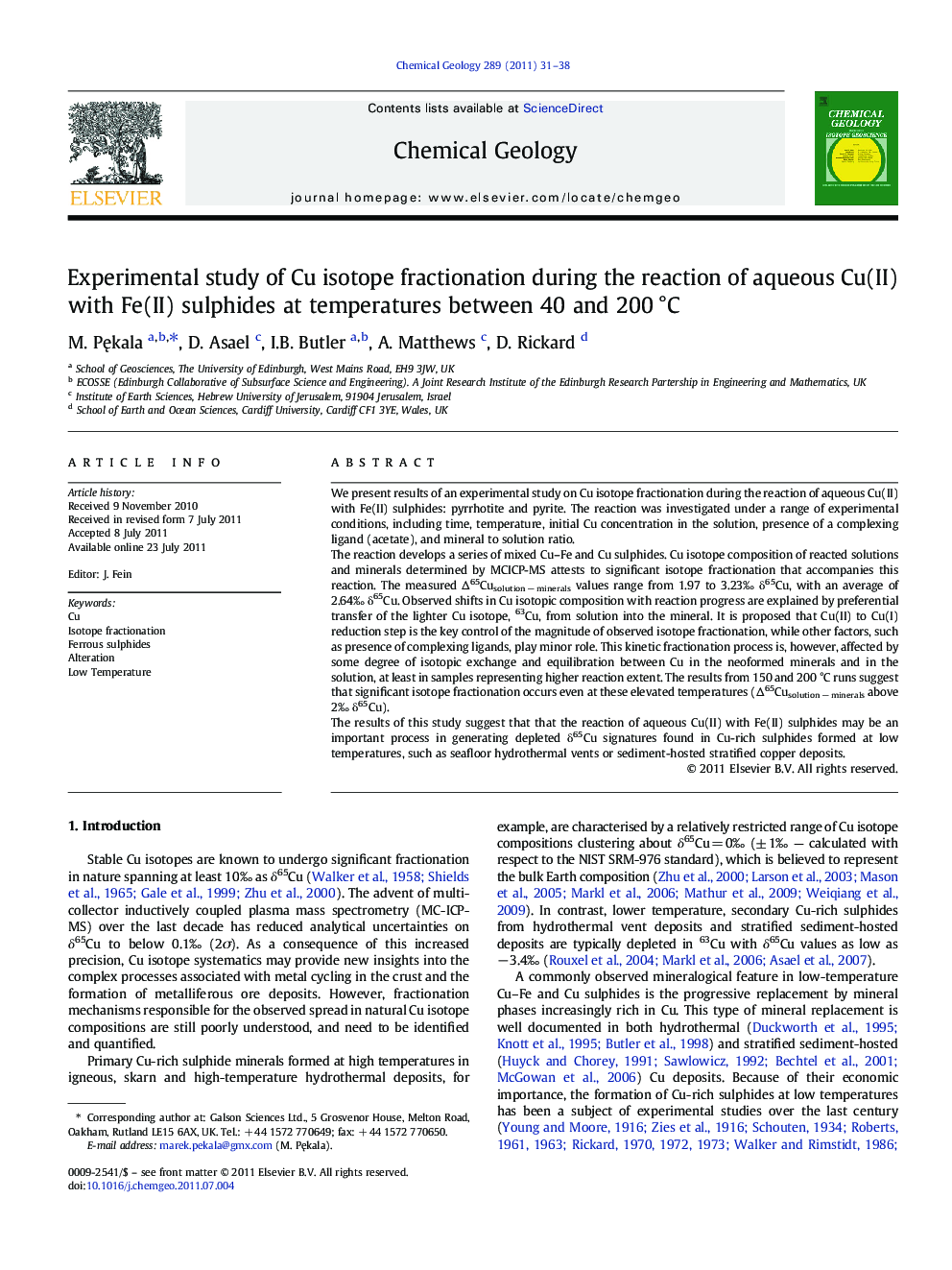| کد مقاله | کد نشریه | سال انتشار | مقاله انگلیسی | نسخه تمام متن |
|---|---|---|---|---|
| 4699651 | 1637659 | 2011 | 8 صفحه PDF | دانلود رایگان |

We present results of an experimental study on Cu isotope fractionation during the reaction of aqueous Cu(II) with Fe(II) sulphides: pyrrhotite and pyrite. The reaction was investigated under a range of experimental conditions, including time, temperature, initial Cu concentration in the solution, presence of a complexing ligand (acetate), and mineral to solution ratio.The reaction develops a series of mixed Cu–Fe and Cu sulphides. Cu isotope composition of reacted solutions and minerals determined by MCICP-MS attests to significant isotope fractionation that accompanies this reaction. The measured ∆65Cusolution − minerals values range from 1.97 to 3.23‰ δ65Cu, with an average of 2.64‰ δ65Cu. Observed shifts in Cu isotopic composition with reaction progress are explained by preferential transfer of the lighter Cu isotope, 63Cu, from solution into the mineral. It is proposed that Cu(II) to Cu(I) reduction step is the key control of the magnitude of observed isotope fractionation, while other factors, such as presence of complexing ligands, play minor role. This kinetic fractionation process is, however, affected by some degree of isotopic exchange and equilibration between Cu in the neoformed minerals and in the solution, at least in samples representing higher reaction extent. The results from 150 and 200 °C runs suggest that significant isotope fractionation occurs even at these elevated temperatures (∆65Cusolution − minerals above 2‰ δ65Cu).The results of this study suggest that that the reaction of aqueous Cu(II) with Fe(II) sulphides may be an important process in generating depleted δ65Cu signatures found in Cu-rich sulphides formed at low temperatures, such as seafloor hydrothermal vents or sediment-hosted stratified copper deposits.
► Cu isotopes fractionate during the reaction of Cu(II) solutions with Fe sulphides.
► The fractionation is kinetic with some degree of isotopic equilibration.
► Measured Δ65Cusolution-minerals gives an average of 2.64‰.
► Significant fractionation (above 2‰) is observed at elevated temperatures (200 °C).
Journal: Chemical Geology - Volume 289, Issues 1–2, 7 October 2011, Pages 31–38